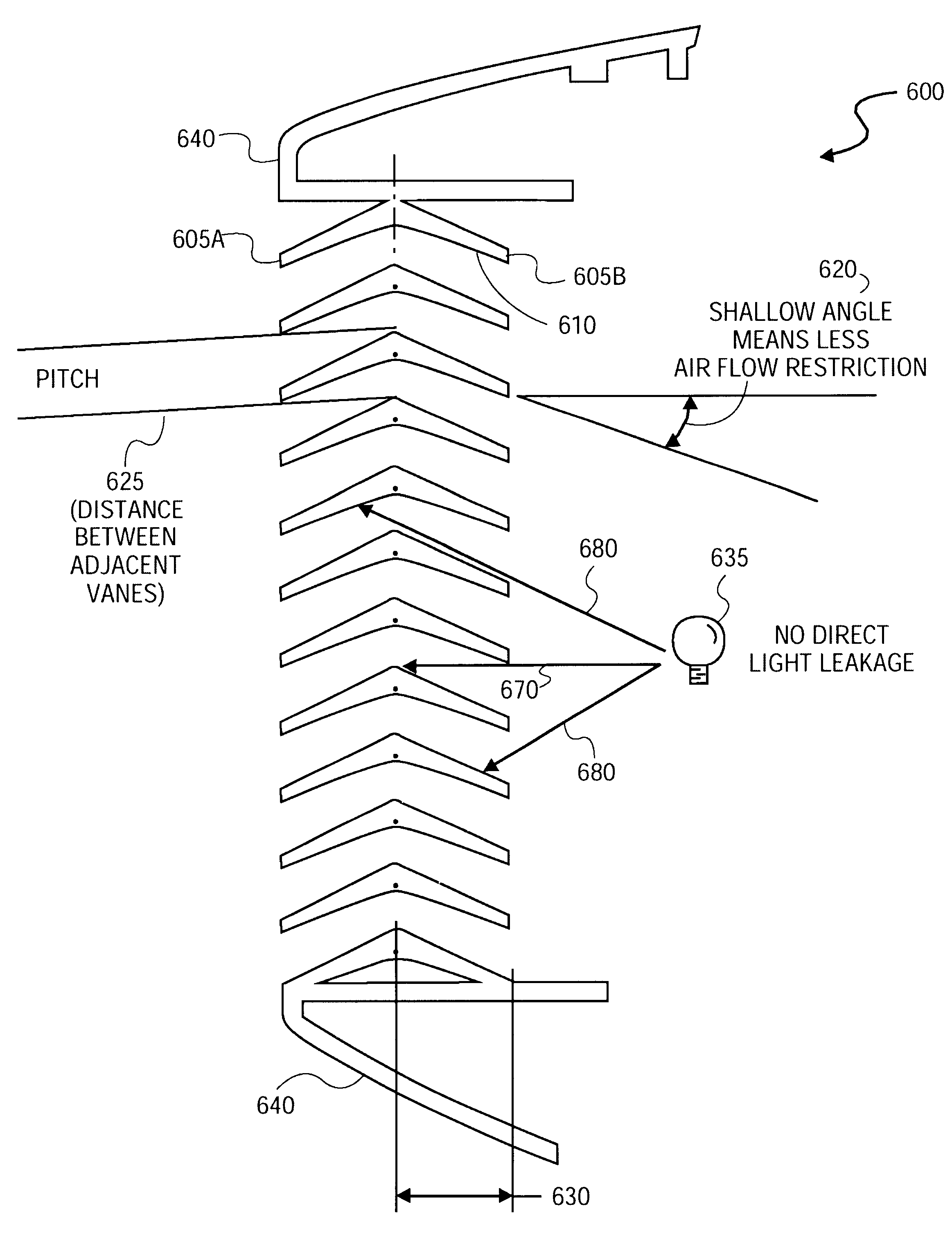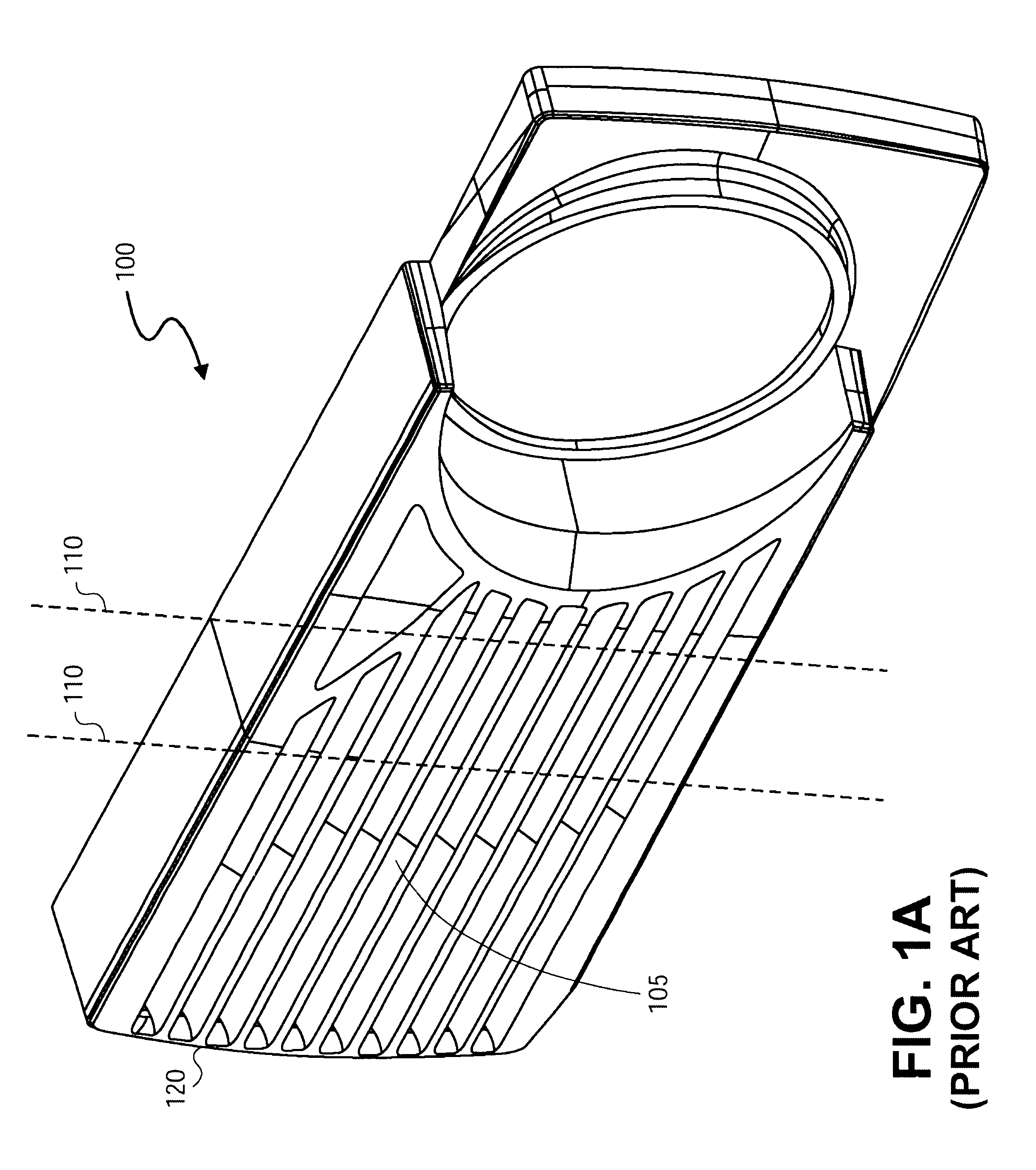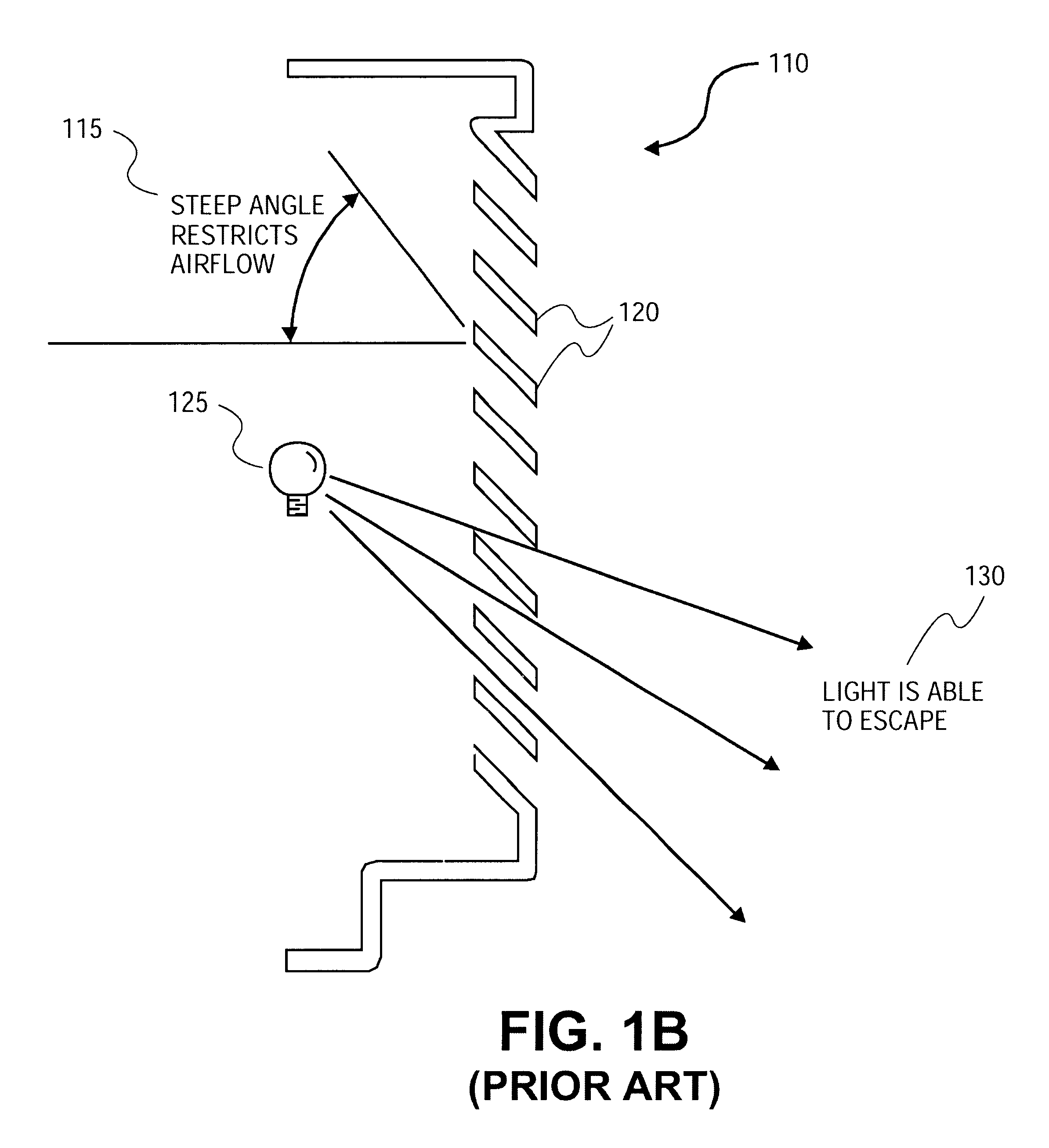Air vent apparatus for blocking light
a technology of air vents and light sources, which is applied in the field of air vents, can solve the problems of severe restrictions, unrestricted air flow, and undesirable increase in the amount of heat buildup of light sources or and achieve the effect of reducing the amount of heat buildup of light sources and other heat emitting components in the interior of the device housing
- Summary
- Abstract
- Description
- Claims
- Application Information
AI Technical Summary
Problems solved by technology
Method used
Image
Examples
Embodiment Construction
Referring now to FIG. 7, wherein an example of one embodiment of an air vent 700 that blocks light using a pitch size of 4.5 mm is illustrated. A single chevron 710 having vanes 705a and 705b is disposed asymmetrically within the vent housing (not shown) such that the vane 705b extending towards the device's interior 740 is substantially perpendicular to the vent housing (not shown) and substantially parallel to the direction of the flow of air 750. At a vane length of 12 mm 730 an optimal vane angle of 28.25 degrees 720 is employed to block direct light while at the same time substantially minimizing the restriction of the air flow 750 through the vent 700. The vane angle is measured from a perpendicular 760 to the vent housing (not shown).
Depending on the requirements of the device, variations in the vane length 730 and vane angle 720 for a given pitch of 4.5 mm may be employed. A table illustrating the range of optimal vane lengths 730 and vane angles 720 is illustrated in Table ...
PUM
 Login to View More
Login to View More Abstract
Description
Claims
Application Information
 Login to View More
Login to View More - R&D
- Intellectual Property
- Life Sciences
- Materials
- Tech Scout
- Unparalleled Data Quality
- Higher Quality Content
- 60% Fewer Hallucinations
Browse by: Latest US Patents, China's latest patents, Technical Efficacy Thesaurus, Application Domain, Technology Topic, Popular Technical Reports.
© 2025 PatSnap. All rights reserved.Legal|Privacy policy|Modern Slavery Act Transparency Statement|Sitemap|About US| Contact US: help@patsnap.com



